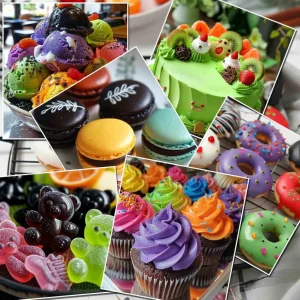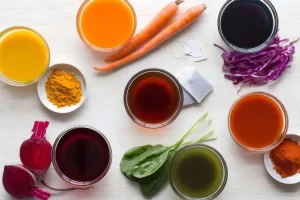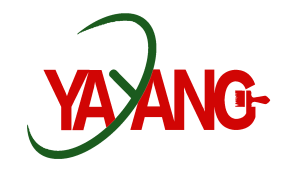
Food colors have been used in cookery for centuries. From the bright red of a strawberry to the brilliant golden color of a perfectly baked croissant, colors play a very important role in our perception of food. With the world’s entry into modern dimensions of synthetic food colours and pigments, are these food colour pigments safe, or is there some kind of potential health risk from the use of the same? In this blog, we go through some knowledge about food colours, their types, the regulation governing their usage, and whether these come with serious risks or benefits.
The Role Played by Food Colors in Modern Cuisine
Food colors serve much more than just an aesthetic purpose. In the food industry, color means a great deal in drawing the attention of the customer towards attractive visuals, thereby making food and beverages appealing. According to the International Food Information Council, color is one of the most powerful senses used to evaluate food; it often dictates our expectations of flavor, quality, and freshness.
Besides their aesthetic appeal, food colorants are added to provide consistency to products. When foods are stored, transported, and manufactured, colors assist in maintaining uniformity to prevent the products from turning dull and unappealing. This is very important in mass productions of candies, sauces, or pre-packaged cakes.
Food Colors Pigments: Natural vs. Synthetic
Natural Food Colors
Natural colors are derived from plants, fruits, vegetables, and even insects. These, being non-toxic and nonpoisonous, are a truly friendly option to human beings and the general environment. In fact, beet juice is generally used for the color red; green is a result of spinach powder, and yellow can be achieved by the use of turmeric.
Advantages of Natural Food Colors:
- Environmental Friendliness:Natural pigments come from renewable plant-based materials; therefore, it reduces the need for harmful synthetic dyes.
- Safer for Health:They are normally free of preservatives and additives; therefore, they are cleaner and much healthier for those who opt for clean-label products.
- Sustainability:Organic and non-GMO products attract the gaze of many health-conscious consumers; therefore, such pigments have a higher demand.
Due to such trends, companies like Hangzhou Yayang Industrial Co., Ltd. (YAYANG) have been offering natural food colors derived from quality, sustainable raw materials. Their edible pigments include a series of bright, bright colors using natural raw materials like plant extracts and are highly suitable for any business that intends to meet the emerging demand of consumers for organic and eco-friendly products.
Synthetic Food Colors
Artificial food colorants, on the other hand, are manufactured substances used in food products for bright and even colors. They can be applied in candies, beverages, sauces, and other processed snacks. They tend to be cheaper and more stable compared to natural colorants and offer consistent coloring with long-lasting effects.
Advantages of Artificial Food Colors:
- Stability:The synthetic pigment would not fade easily, and on many sides, even in manufacturing processes using heat, light, and air, it’s tough.
- Brilliant Colors: Wide range, vivid, and sometimes more lively in comparison with alternative natural materials for coloring
- Economical:Synthetic dyes are always lower in cost as compared to the natural alternative and thus provide economy to manufacturers that helps to minimize production cost as low as possible.
Despite these merits, artificial food colorants have also been criticized because of health risks they may bring about. For instance, some artificial colorants have been linked to hyperactivity in children and allergic reactions in sensitive individuals. Among the dyes most in the focus of discussion in this respect are the Red 40, Yellow 5, and Blue 1, widely used in the food industry.
Are Food Pigments Safe for Consumption?

Food colorants, whether derived from natural materials or of chemical synthesis, come within the ambit of several agencies concerned with safety of foods. For instance, FDA has an exhaustive list of approved color additives and guidelines detailing their authorized use in foods. In the same way, the European Food Safety Authority- EFSA does a safety assessment for food colorants used in products sold within the European Union.
FDA Regulations and Safety Standards
The FDA lays down different regulations regarding food colors under CFR 21 Part 73 & 74, which gives the safe use of color additives in foods, drugs, cosmetics. The regulation requires that all coloring additives used in foods undergo acute toxicity studies to establish the levels of consumption allowable. Only those meeting the required standards of safety are approved for use in food products.
Why We Color Our Food
Beyond aesthetic appeal, the use of food color pigments is many times much more than about visual enhancement. Food coloring has moved from an art to a science in order to meet the growing demands of both consumers and the food industry. Here are a few reasons why food coloring is so widespread:
- Unappealing food is not appetizing:If the food has some vibrant color in it, it tends to be more attractive. Food coloring imparts visual attractiveness to food, which makes it a pleasure to eat.
- Product Uniformity Maintenance: Companies producing packaged food use synthetic dyes for attaining product uniformity over batches. Therefore, every time a particular kind of cake icing or soft drink is consumed, it would have a similar look.
- Cultural Significance:Some colors have cultural or festive meanings associated with them. Examples include that most holiday foods are colored red and green while yellow is an emotionally warm color often used on foods to impart feelings of comfort.
YAYANG’s Commitment to Safe and High-Quality Food Pigments
As one of the leading effect pigment manufacturers, Hangzhou Yayang Industrial Co., Ltd. has been putting huge efforts into providing international safety-standard natural and synthetic food colors. This Food Colors Pigments from YAYANG, coming in more than 90 colors, is FDA-registered and complies with all regulations under CFR 21 Part 73 & 74, which makes this dust safe to use in foods and beverages. The pearls, pirouline, and pearlescent pigments will be used in cake decoration, chocolates, beverages, and many other areas.
Food pigment quality should be very good and safe, ensured through strict quality control processes and various certifications such as ISO 9001, ISO 22000, Kosher, and HALAL. Moreover, products offered by YAYANG give business owners an opportunity to personalize the packaging or the design of their product to suit market demand.
Conclusion: A Delicate Balance between Aesthetics and Safety
Food color pigments are indispensable parts of modern food production. The practice gives a food manufacturer the ability to come up with a colorful product which appeals to the eyes, thus meeting the expectations of the target consumers. Though the use of synthetic dyes remains an issue, food colors are manufactured under very strict standards that ensure safety upon proper application.
Nature or artificial, the essence is in selection, and with a reliable supplier like YAYANG, you will get, without fail, food color pigments that are of high quality, safe, and compliant, hence giving value to your products to global standards for food safety. With its gamut of FDA-approved edible pigments, YAYANG is well placed to become a partner of choice for any company seeking high-range food coloring solutions with a focus on sustainability.
